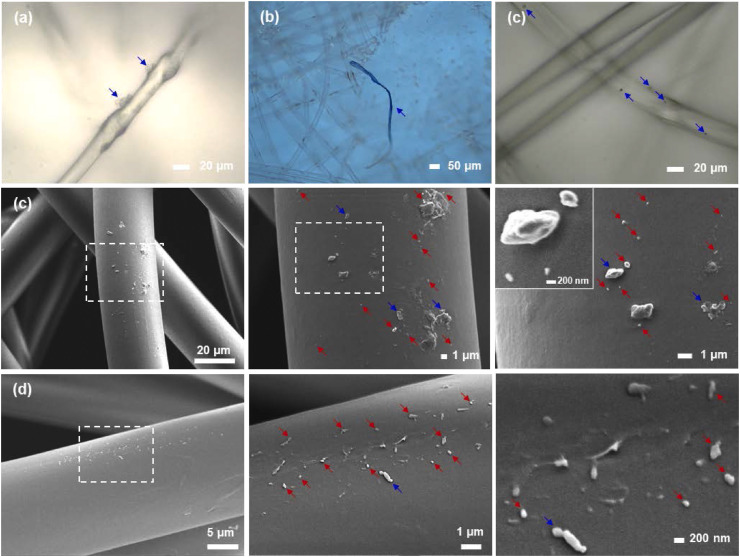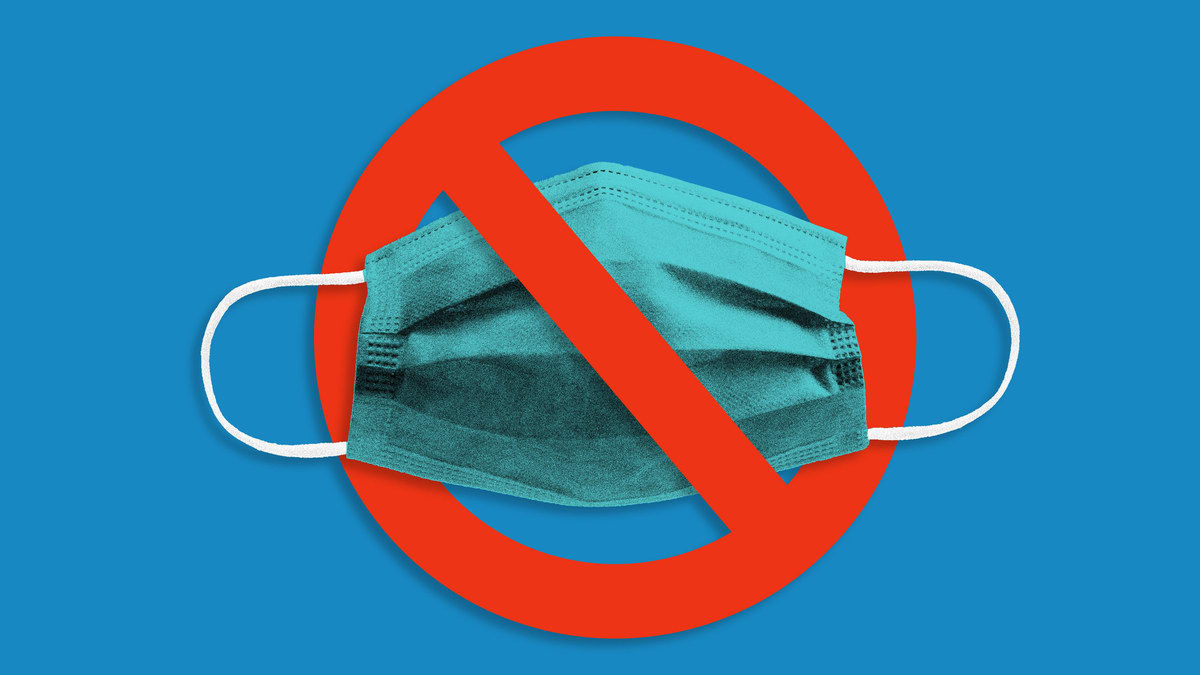Conclusion Regarding Masks They Do Not Work
By Dr. Sherri Tenpenny, DO, AOBNMM, ABIHM
A Literature Review and Meta-Analysis of the Effects of Lockdowns on COVID-19 Mortality
July 19, 2022 – Too many cooks? The complications of cross-prescribing psych meds “While mandatory masking may be viewed as cumbersome and expensive, mathematical models incorporating individual adaptive human behavior during epidemics have shown the essential role of continuous reinforcement of masking in minimizing epidemics. “An even larger issue to tackle is how polarized our society is, says SFI External Professor Simon Levin (Princeton University), a co-author on the paper. “I have never in my lifetime seen individuals so divided over something I consider commonsense public health measures.”
January 1, 2021 – Need for assessing the inhalation of micro(nano)plastic debris shed from masks, respirators, and home-made face coverings during the COVID-19 pandemic (full text) “With an ongoing shortage from the major suppliers and a myriad of products with countless brands currently offered in the market, it seems inevitable that some products would present similarly, if not more, abundant respirable debris, given that there is no such regulation in place. Whether these plastic debris could cause stress and inflammation in the human respiratory tract and exacerbate vulnerability to viral infection is a further question that warrants investigation.”
November 18, 2020 – Effectiveness of Adding a Mask Recommendation to Other Public Health Measures to Prevent SARS-CoV-2 Infection in Danish Mask Wearers : A Randomized Controlled Trial “Reduction in release of virus from infected persons into the environment may be the mechanism for mitigation of transmission in communities where mask use is common or mandated, as noted in observational studies. Thus, these findings do not provide data on the effectiveness of widespread mask wearing in the community in reducing SARS-CoV-2 infections.”
 September 9, 2020 – The Association Between Physical and Mental Health and Face Mask Use During the COVID-19 Pandemic: A Comparison of Two Countries With Different Views and Practices (full text) “This study has the following funding sources: Huaibei Normal University, China, Ministry of Science and Higher Education in Poland under the 2019–2022 program ”Regional Initiative of Excellence”, project number 012/RID/2018/19 and National University of Singapore iHeathtech Other Operating Expenses (R-722-000-004-731).”
September 9, 2020 – The Association Between Physical and Mental Health and Face Mask Use During the COVID-19 Pandemic: A Comparison of Two Countries With Different Views and Practices (full text) “This study has the following funding sources: Huaibei Normal University, China, Ministry of Science and Higher Education in Poland under the 2019–2022 program ”Regional Initiative of Excellence”, project number 012/RID/2018/19 and National University of Singapore iHeathtech Other Operating Expenses (R-722-000-004-731).”
September 7, 2020 – Impact of respiratory protective devices on respiration: implications for panic vulnerability during the COVID-19 pandemic. “In line with our experience, some studies revealed that certain people in the general population appeared to repeatedly move their masks, touch them, or not to wear them when required due to multiple physiological and psychological sources of RPD-related discomfort, thereby decreasing infection prevention. For the same reasons, even HCWs, a category of people who are supposed to be well trained on this issue, were often found to be poorly compliant with RPDs (Baig et al., 2010; Johnson, 2016; Wizner et al., 2018). Respiratory discomfort is a main complaint of RPD wearers, and it was found that approximately 30% of HCWs complained of breathing difficulties most of the time or always when wearing an N95 respirator. A further 34% of HCWs declared difficulty breathing some of the time, while 36% never or rarely complained of breathing difficulties (Baig et al., 2010). In line with this, increased levels of anxiety related to a sense of claustrophobia have been described by the wearers of different RPD types (Baig et al., 2010; Johnson, 2016).”
September 2020 – Masks, false safety and real dangers, Part 1: Friable mask particulate and lung vulnerability (pdf)”There is no biological history of mass masking until the current era. It is important to consider possible outcomes of this society-wide experiment. The consequences to the health of individuals is as yet unknown. Masked individuals have measurably higher inspiratory flow than non-masked individuals.”
July/August, 2020 – During The Coronavirus (COVID-19) Pandemic, does Wearing a Mask Improve or Worsen Physical Performance? “Around 25% of people infected with the new coronavirus may show no symptoms, yet still transmit the virus. One of the main problems with wearing a mask is that it hinders breathing, with the mask gradually becoming damp, increasing its resistance to air intake. Wearing a mask while performing physical activity requires a period of adaptation, as the flow of air to the lungs is reduced, requiring a reduction in the normal rhythm until the wearer has managed to adapt to it. Vigorous and intense exercise can cause inflammatory activity to increase, and should be minimized in order to protect the immune system. Secretory immunoglobulin A (IgA) is an antibody protein used by the immune system to neutralize pathogens, including viruses, and decreases with intense exercise. Exercise is considered intense when it is necessary to breathe through the mouth to eliminate the higher concentrations of CO2, but mouth breathing is associated with infections of the upper respiratory tract. Preference should be given to light to moderate exercise, around three times a week. Wearing a mask, and training in nasal breathing are the best and safest ways to reduce the entry of particles, and should be encouraged during this COVID-19 pandemic. Level of evidence V; Opinion of the specialist.
July 12, 2020 – Is wearing a face mask safe for people with epilepsy? “Some of the likely disadvantag es of the use of face mask by healthy people in the general public include: potential headache and/or breathing difficulties, potential increased risk of self‐contamination, and potential development of facial skin lesions. The WHO encourages countries adopting policies on face masks use in the general public to conduct good quality research to assess the effectiveness (and potentially the disadvantages) of this intervention to prevent and control transmission of COVID‐19:
June 16, 2020 – Surgical mask dermatitis caused by formaldehyde (releasers)during the COVID-19 pandemic “The prolonged use of facial masks may result in several skin problems, mostly irritant contact dermatitis (ICD), but also flare-ups of pre-existing dermatoses (eg, rosacea), contact urticaria, and allergic contact dermatitis (ACD). For example, during the previous severe acute respiratory syndrome (SARS) epidemic, several facial skin problems were reported, and even respiratory complaints without skin lesions, due to the wearing of polypropylene N95 (FFP2) respirators. Of interest, patch tests revealed contact allergy to formaldehyde (releasers) in some of these cases and chemical analyses could confirm that trace amounts of free formaldehyde were present in these masks as a by-product of the degradation of polypropylene. In the present case, both formaldehyde and bronopol in a polypropylene surgical mask caused facial ACD, mimicking a flare-up of rosacea. Polyester- or cellulose-based masks might constitute formaldehyde-free alternatives in these cases.”
May 2020 – Coronavirus and masks, answered Should you wear a mask? How do you make one? What’s the evidence? “The recommendation marks a shift from the federal government. Less than six weeks ago, Surgeon General Jerome Adams tweeted that members of the general public should “STOP BUYING MASKS!” He added that masks “are NOT effective in preventing general public from catching #Coronavirus, but if healthcare providers can’t get them to care for sick patients, it puts them and our communities at risk!”
April 9, 2020 – Face masks for the public during the covid-19 crisis “A pooled meta-analysis found no significant reduction in influenza transmission (relative risk 0.78, 95% confidence interval 0.51 to 1.20; I2=30%, P=0.25). They also identified seven studies conducted in households; four provided masks for all household members, one for the sick member only, and two for household contacts only. None showed a significant reduction in laboratory confirmed influenza in the face mask arm. The authors concluded: “randomized controlled trials of [face masks] did not support a substantial effect on transmission of laboratory-confirmed influenza.”
April 2020 – Masks Don’t Work: A review of science relevant to COVID-19 social policy “The main transmission path is long-residence-time aerosol particles (< 2.5 μm), which are too fine to be blocked, and the minimum-infective-dose is smaller than one aerosol particle. The present paper about masks illustrates the degree to which governments, the mainstream media, and institutional propagandists can decide to operate in a science vacuum, or select only incomplete science that serves their interests. Such recklessness is also certainly the case with the current global lockdown of over 1 billion people, an unprecedented experiment in medical and political history.”
March 19, 2020 – Coronavirus disease 2019: The harms of exaggerated information and non‐evidence‐based measures “This research agenda requires carefully collected, unbiased data to avoid unfounded inferences. Larger‐scale diagnostic testing should help get more unbiased estimates of cases, basic reproduction number and infection fatality rate. The research agenda also deserves proper experimental studies. Besides candidate vaccines and drugs, randomized trials should evaluate also the real‐world effectiveness of simple measures (eg face masks in different settings), least disruptive social distancing measures and healthcare management policies for documented cases.”
October 1, 2019 – Face masks could raise pollution risks People can get a false sense of security from flimsy gauze, and linger too long outdoors in toxic air, argue Wei Huang and Lidia Morawska. ”
Mach 21, 2013 – Carbon dioxide rebreathing in respiratory protective devices: influence of speech and work rate in full-face masks “Carbon dioxide (CO2) rebreathing has been recognised as a concern regarding respirator use and is related to symptoms of discomfort, fatigue, dizziness, headache, muscular weakness and drowsiness. Previous investigations are limited by small sample size and have not evaluated the relationship between CO2 inhalation and phonic respiration (breathing during speech) in respiratory protective devices (RPDs).”
March 23, 2012 – Risk, ritual and health responsibilisation: Japan’s ‘safety blanket’ of surgical face mask‐wearing “Several American cities legalised mask‐wearing for all citizens in public places and it was recommended in the UK (Crosby 2003, Loeb 2005, Tomes 2010). As Tomes (2010: 48) describes: ‘Faced with a deadly “crowd” disease, public health authorities tried to implement social‐distancing measures at an unprecedented level of intensity’. Public‐gathering bans were suspended on the condition that masks were then worn instead.”
September 13, 2011 – Protective facemask impact on human thermoregulation: an overview “The relatively minor reported increases in core temperature directly attributable to the wearing of PFMs suggest that associated perceptions of increased body temperature may have a significant psychological component or that regional or global brain temperature changes are involved. Modifications in PFM structure, components, and materials might allow for improved heat dissipation and enhanced compliance with use.”
March 31, 2010 – “Destroyer and teacher”: Managing the masses during the 1918-1919 influenza pandemic. “Still, gauze masks had their detractors within the public health community. One notable critic was the Detroit health commissioner, Dr. J.W. Inches, who declared “.. . these masks are worthless.” They were so porous that not only “.. . a mosquito could jump through them,” he remarked, but, “I have sprinkled granulated sugar through them,” telling proof that a microbe could get through the mask’s defenses.”
November 3, 2011 – Chemically Isolated Graphene Nanoribbons Reversibly Formed in Fluorographene Using Polymer Nanowire Masks “The polymer protected the GNR from atmospheric adsorbates while the adjacent fluorographene stably p-doped the GNRs which had electron mobilities of ∼2700 cm2/(V·s). Chemical isolation of the GNR enabled resetting the device to nearly pristine graphene.”



